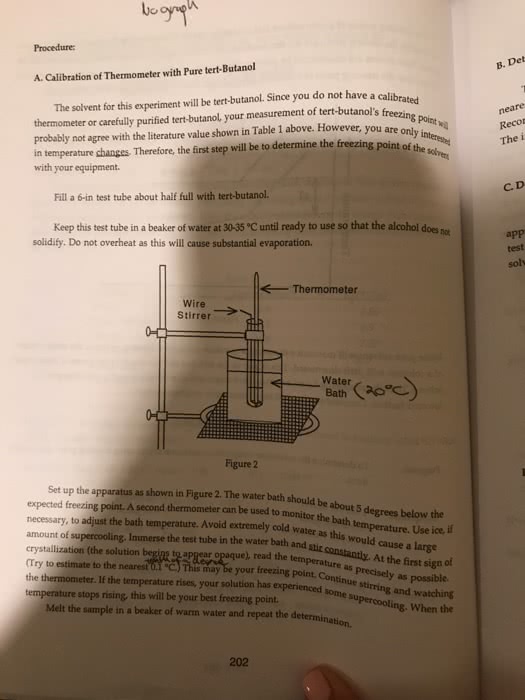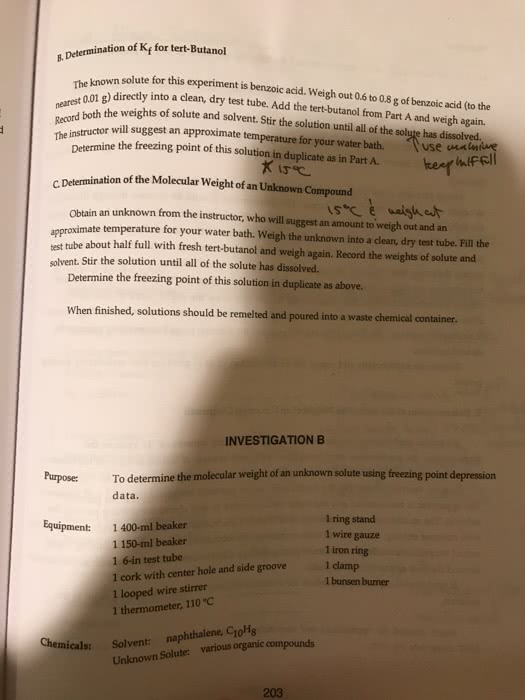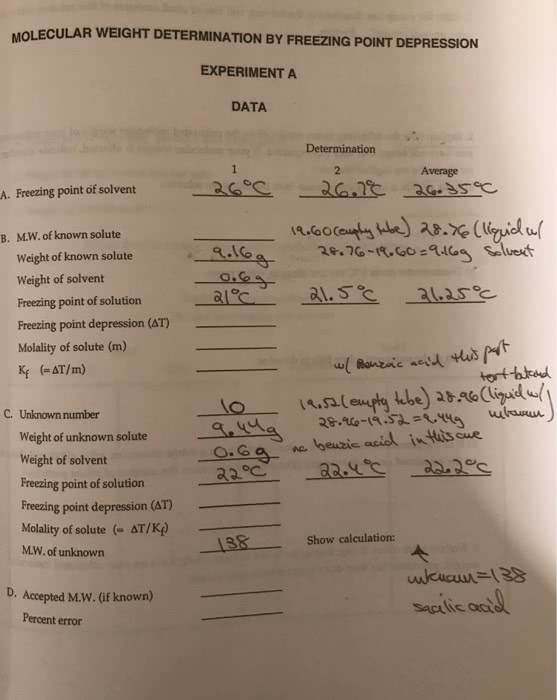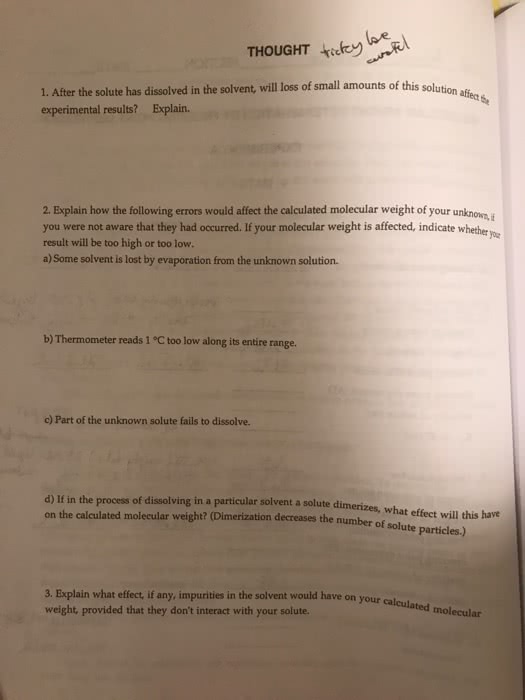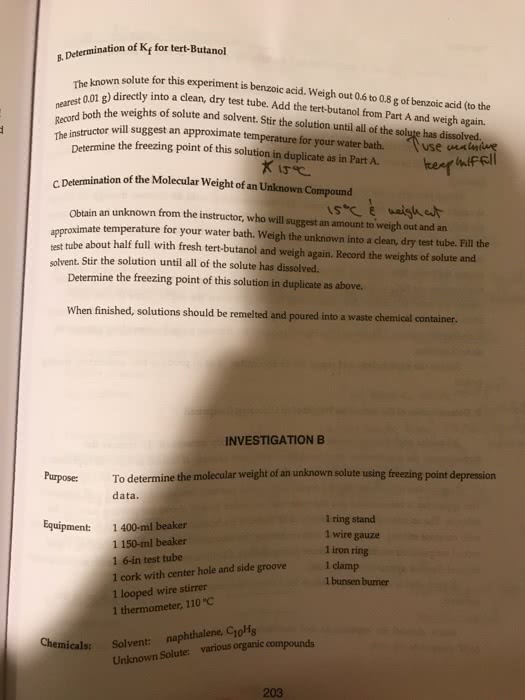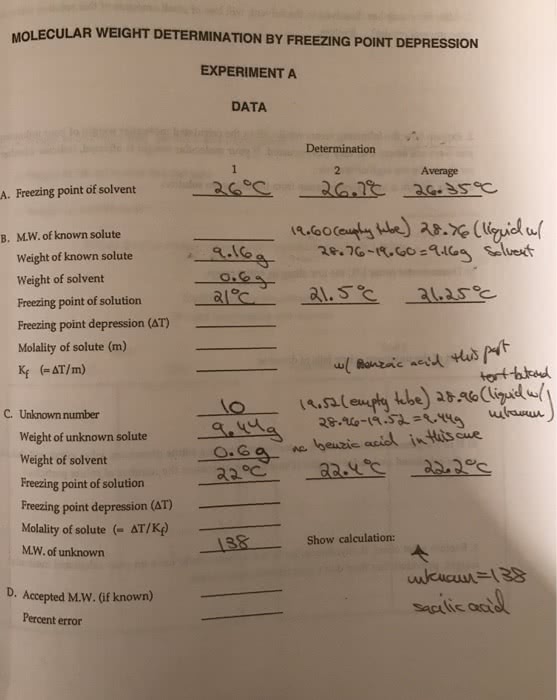- Use the pipette to fill the test tube with approximately 1.5 mLof water.
- Move the temperature marker on the thermometer down to the -10°C mark.
- Place the thermometer inside the test tube. The marker shouldbe located at the very top of the test tube to prevent thethermometer from wiggling around. If not, adjust itaccordingly.
- Place the thermometer and test tube into a 250 mL beaker sothat the test tube can rest upright.
- Put the beaker with the test tube and thermometer in a freezerand allow approximately one hour to completely freeze and reach atleast -5 °C. If the temperature is at least -5 °C, move on to thenext step. If not, wait for the temperature to drop before movingon to the next step.
- Take the beaker and test tube with thermometer out of thefreezer.
- Record the temperature on the thermometer in Table 2 and makean observation about the state of the water.
- Repeat Step 6 every five minutes for thirty minutes.
Table 2: Temperature of Frozen Water over Time
Time (s)
Temperature (°C)
Observation
0
5
10
15
20
25
30
Boiling Water
- Fill a pot halfway with water and place it on the stovetop.
- Place and hold the thermometer in the center of the water.
- Turn on the stove to bring the water to a boil.
LAB SAFETY: Use caution when handling boilingwater. Monitor the apparatus at all times and never handle a hotpan without a hot pad or oven mitt. - Once the water begins to boil, wait one minute and record thetemperature on the thermometer in Table 3.
- Wait five minutes and observe another reading of thethermometer. Record the temperature in Table 3.
Table 3: Temperature of Boiling Water over Time
Time (min.)
Boiling Temperature (°C)
1
5
Post-Lab Questions
1. Describe what happened to the temperature of the water as itwas melting.
2. Hypothesize how the temperature of the water changed as itwas freezing.
3. What happened to the temperature of the water after itmelted?
4. What happened to the temperature of the water as it washeating?
5.What happened to the temperature of the water after it startedboiling?
6.What was the temperature of your boiling water? The standardboiling temperature for water is 100 °C. Does your measurementagree with this? Explain why or why not.
7.Explain why temperature does not change during a phase change.Where does the heat energy go if not into increasing or decreasingtemperature?
- Use the pipette to fill the test tube with approximately 1.5 mLof water.
- Move the temperature marker on the thermometer down to the -10°C mark.
- Place the thermometer inside the test tube. The marker shouldbe located at the very top of the test tube to prevent thethermometer from wiggling around. If not, adjust itaccordingly.
- Place the thermometer and test tube into a 250 mL beaker sothat the test tube can rest upright.
- Put the beaker with the test tube and thermometer in a freezerand allow approximately one hour to completely freeze and reach atleast -5 °C. If the temperature is at least -5 °C, move on to thenext step. If not, wait for the temperature to drop before movingon to the next step.
- Take the beaker and test tube with thermometer out of thefreezer.
- Record the temperature on the thermometer in Table 2 and makean observation about the state of the water.
- Repeat Step 6 every five minutes for thirty minutes.
Table 2: Temperature of Frozen Water over Time
Time (s) | Temperature (°C) | Observation |
0 | ||
5 | ||
10 | ||
15 | ||
20 | ||
25 | ||
30 |
Boiling Water
- Fill a pot halfway with water and place it on the stovetop.
- Place and hold the thermometer in the center of the water.
- Turn on the stove to bring the water to a boil.
LAB SAFETY: Use caution when handling boilingwater. Monitor the apparatus at all times and never handle a hotpan without a hot pad or oven mitt. - Once the water begins to boil, wait one minute and record thetemperature on the thermometer in Table 3.
- Wait five minutes and observe another reading of thethermometer. Record the temperature in Table 3.
Table 3: Temperature of Boiling Water over Time
Time (min.) | Boiling Temperature (°C) |
1 | |
5 |
Post-Lab Questions
1. Describe what happened to the temperature of the water as itwas melting.
2. Hypothesize how the temperature of the water changed as itwas freezing.
3. What happened to the temperature of the water after itmelted?
4. What happened to the temperature of the water as it washeating?
5.What happened to the temperature of the water after it startedboiling?
6.What was the temperature of your boiling water? The standardboiling temperature for water is 100 °C. Does your measurementagree with this? Explain why or why not.
7.Explain why temperature does not change during a phase change.Where does the heat energy go if not into increasing or decreasingtemperature?

